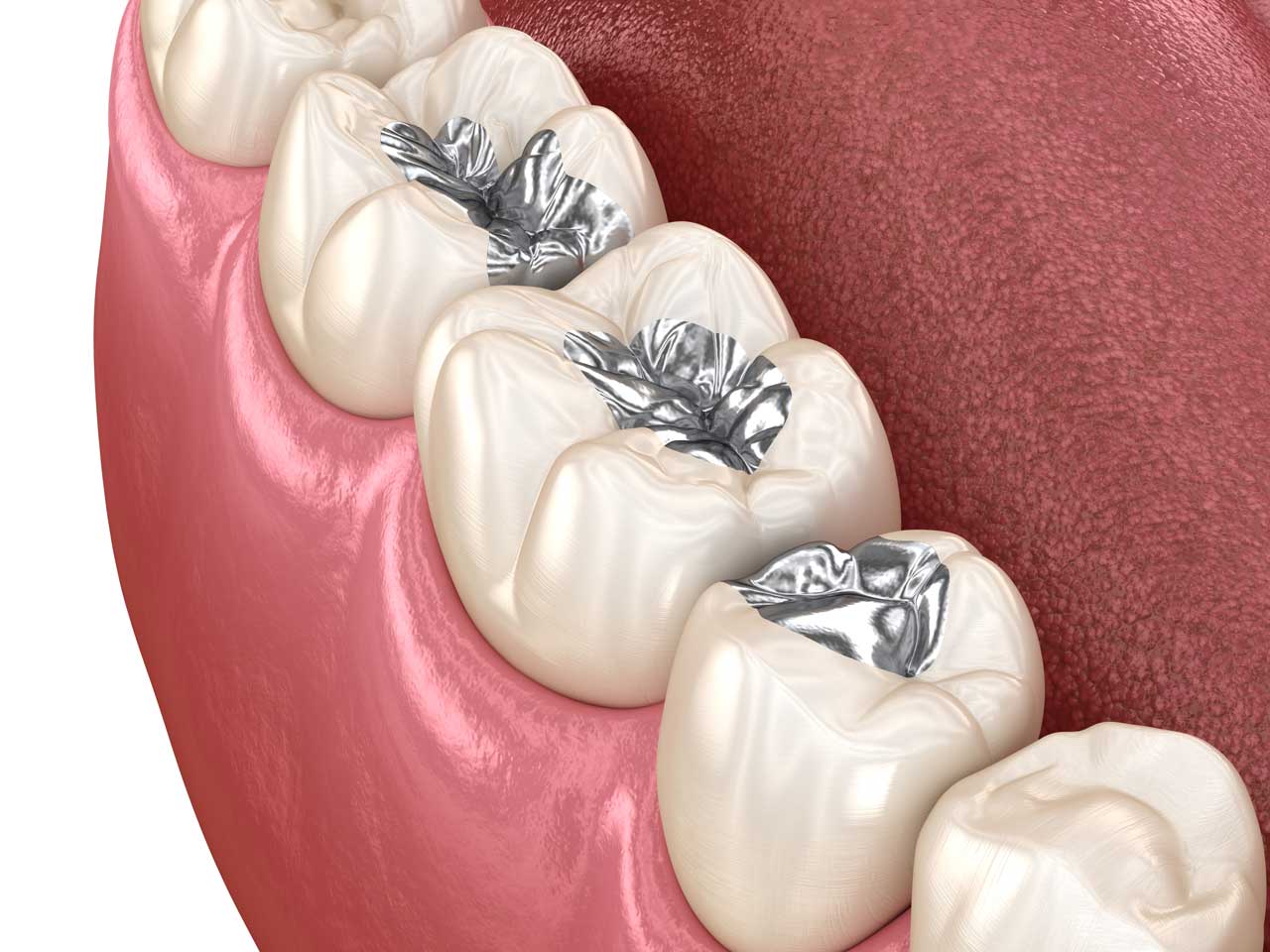Filling is the process of cleaning and restoring the decayed tissues in the teeth as a result of the decay of the teeth due to various reasons. Amalgam filling is also a type of filling used in dentistry. However, it is not a frequently preferred type of filling today.
What is Dental Filling?
Dental filling is the restoration of decayed, broken or cracked teeth with various materials. The aim of this treatment is to restore the functions of teeth that have lost substance.
What are the Filling Types?
Filling types are as follows:
- Gold Fillings: These are the fillings prepared in a laboratory environment on order of gold fillings.
- Amalgam Fillings: Amalgam filling is not a preferred dental filling today. It is also called silver filling. It has a gray, metallic appearance. For this reason, it is mostly applied to the posterior teeth.
- Composite Fillings: These are fillings that can be used in any tooth where a natural appearance is desired, thanks to the same color as the tooth. It can be done in a single session.
- Porcelain Fillings: Although the cost is a little higher, the features such as no color change and no staining are among the reasons why porcelain fillings are often preferred.
What is Amalgam Filling?
Amalgam filling was once one of the most common materials used to fill cavities caused by caries. It is also known as silver filling because it has a silver appearance.
Today, tooth-colored materials are used to treat caries and fill the gaps. For this reason, the current use of amalgam filling is very limited. The reason for this is both the deterioration of the aesthetic appearance and the thought that amalgam filling has some damage.
What are the Advantages of Amalgam Filling?
Amalgam filling advantages are as follows:
- It provides fast application convenience.
- Humidity control is not essential in the applied area.
- Its durability is quite good.
What are the Disadvantages of Amalgam Filling?
The disadvantages of amalgam filling are as follows:
- The color is bad.
- It may show biological incompatibility with the tooth.
- Mercury vapor is released during application. This situation is harmful to health.
- After the amalgam is applied, it releases mercury vapor, especially during chewing and under force.
- Amalgam removal requires special precautions. Therefore, it leads to loss of time and cost.
- It does not wear out, but can crack or even break. Because it cannot be chemically bonded to the tooth.
As can be seen, the fact that amalgam filling has more disadvantages than advantages causes this type of filling to not be preferred today.
What are Amalgam Filling Damages?
Although amalgam filling is effective in terms of permanence, it has been used less frequently in recent years due to its damages. This is because most of its content is composed of the element mercury. Other substances in the filler are silver, copper and tin.
Mercury is a substance that is in liquid form at room temperature. It binds together other metals used in the filling. In this way, it creates a solid filling material. However, studies have revealed that mercury, even in fillings, has harmful effects on human health. Mercury, which has a toxic effect, spreads to the organs, can damage the heart, liver, lungs and kidneys, nervous system and immune system. In addition , mercury poisoning can be seen due to amalgam filling .
What Are the Symptoms of Amalgam Filling Poisoning?
Mercury poisoning manifests itself with various symptoms. Symptoms of mercury poisoning are as follows:
- Fever
- Strength loss
- muscle pain
- Headache
- Movement disorders caused by short-term contraction of muscles
- Throat fever
- visual impairment
- Having a metal taste in the mouth
- Forgetfulness
- Nausea
- Fever in the mouth
- Vomiting
- Diarrhea
- cramps in the abdomen
- Irritability
